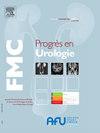Prise en charge des carcinomes urothéliaux N+
Q4 Medicine
引用次数: 0
Abstract
Les carcinomes urothéliaux avec envahissement ganglionnaire au diagnostic représentent environ 10 % des patients et le pronostic reste péjoratif avec un risque de progression métastatique important. Le scanner reste l’imagerie de référence, même si le PET-scanner au 18-FDG peut venir en complément pour confirmer l’atteinte ganglionnaire et éliminer une extension à distance. Pour les patients cN2–3, la prise en charge repose sur un traitement systémique de première ligne métastatique par enfortumab vedotin + pembrolizumab. Pour les patients cN1 (ou cN2 avec ≤ 2 ganglions atteints), le traitement repose sur une prise en charge multimodale, avec un traitement systémique premier, dit d’« induction », suivi d’un traitement local maximaliste. Un traitement adjuvant est également souvent envisagé en fonction des résultats anatomopathologiques finaux. Un suivi rapproché est recommandé pendant les deux premières années.
Urothelial carcinomas with lymph node involvement at diagnosis represent approximately 10% of patients and the prognosis remains poor with a significant risk of metastatic progression. CT scan remains the standard imaging, even if 18-FDG PET scan can be used in addition to confirm lymph node involvement and rule out distant metastases. For cN2–3 patients, therapeutic strategy is based on a first-line metastatic treatment with enfortumab vedotin + pembrolizumab. For cN1 patients (or cN2 with ≤ 2 positive lymph nodes), treatment is based on multimodal strategy, with initial systemic treatment, called “induction treatment”, followed by maximalist local treatment. Adjuvant treatment is also often considered based on the final histopathological results. Close monitoring is recommended during the first two years.
N+尿路癌的治疗
约10%的患者被诊断为尿路淋巴结浸润,预后较差,转移进展风险较大。该扫描仪仍然是参考图像,尽管18-FDG PET- Scanner可以作为补充,以确认淋巴结病变和消除远程延伸。对于cN2 - 3患者,治疗基于enfortumab vedotin +派姆单抗的转移一线全身治疗。对于cN1患者(或cN2患者≤2个淋巴结),治疗基于多模式管理,首先是全身治疗,称为“诱导”,然后是最大限度的局部治疗。辅助治疗也经常根据最终的解剖病理结果来考虑。建议在头两年进行密切监测。诊断中涉及淋巴结的尿路癌约占患者的10%,预后仍然较差,有显著的转移进展风险。CT扫描仍然是标准的成像,即使18-FDG PET扫描也可以用于确认淋巴结的参与和排除远处的转移。对于cN2 - 3患者,治疗策略基于使用enfortumab Vedotin +派姆单抗的一线转移治疗。对于cN1患者(或≤2阳性淋巴结的cN2患者),治疗基于多模态策略,初始系统治疗称为“诱导治疗”,然后是最大限度的局部治疗。辅助治疗也经常根据最终的组织病理学结果来考虑。建议在头两年进行密切监测。
本文章由计算机程序翻译,如有差异,请以英文原文为准。
求助全文
约1分钟内获得全文
求助全文

 求助内容:
求助内容: 应助结果提醒方式:
应助结果提醒方式:


